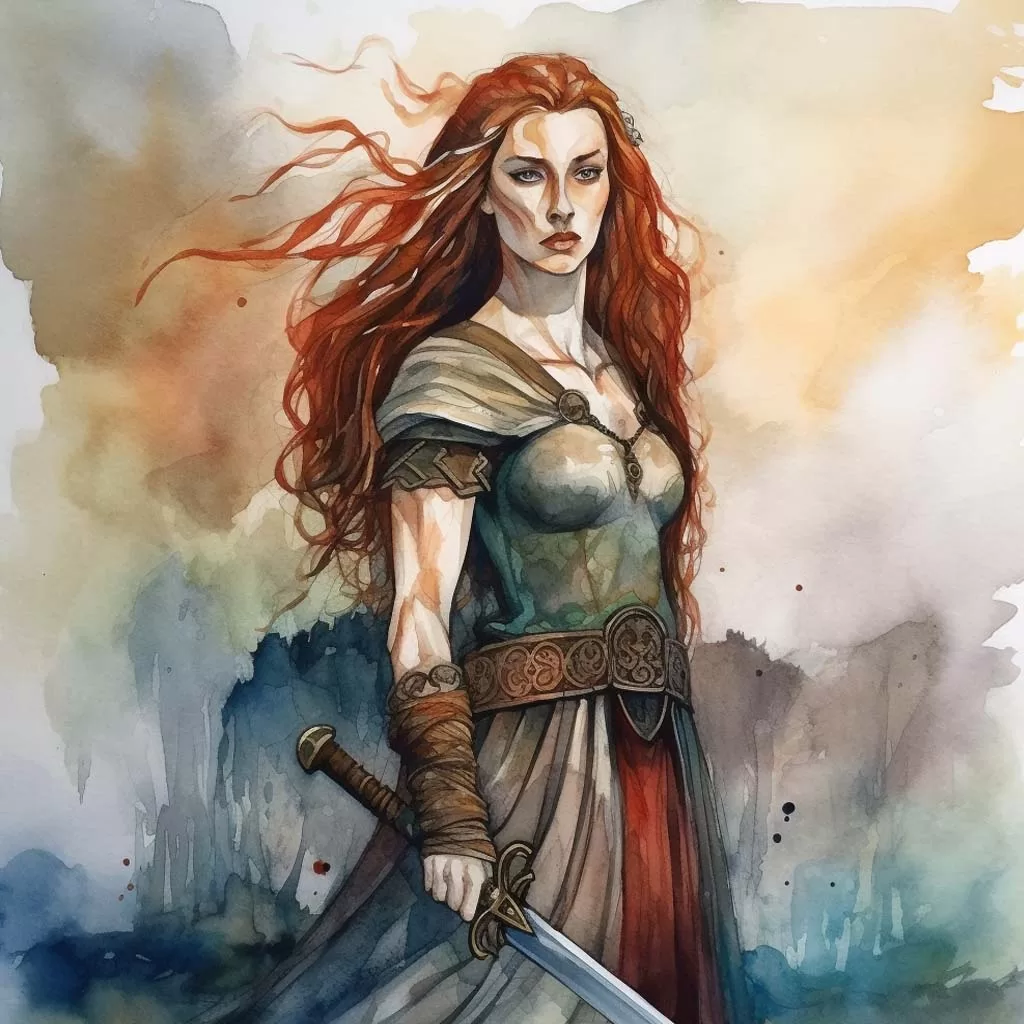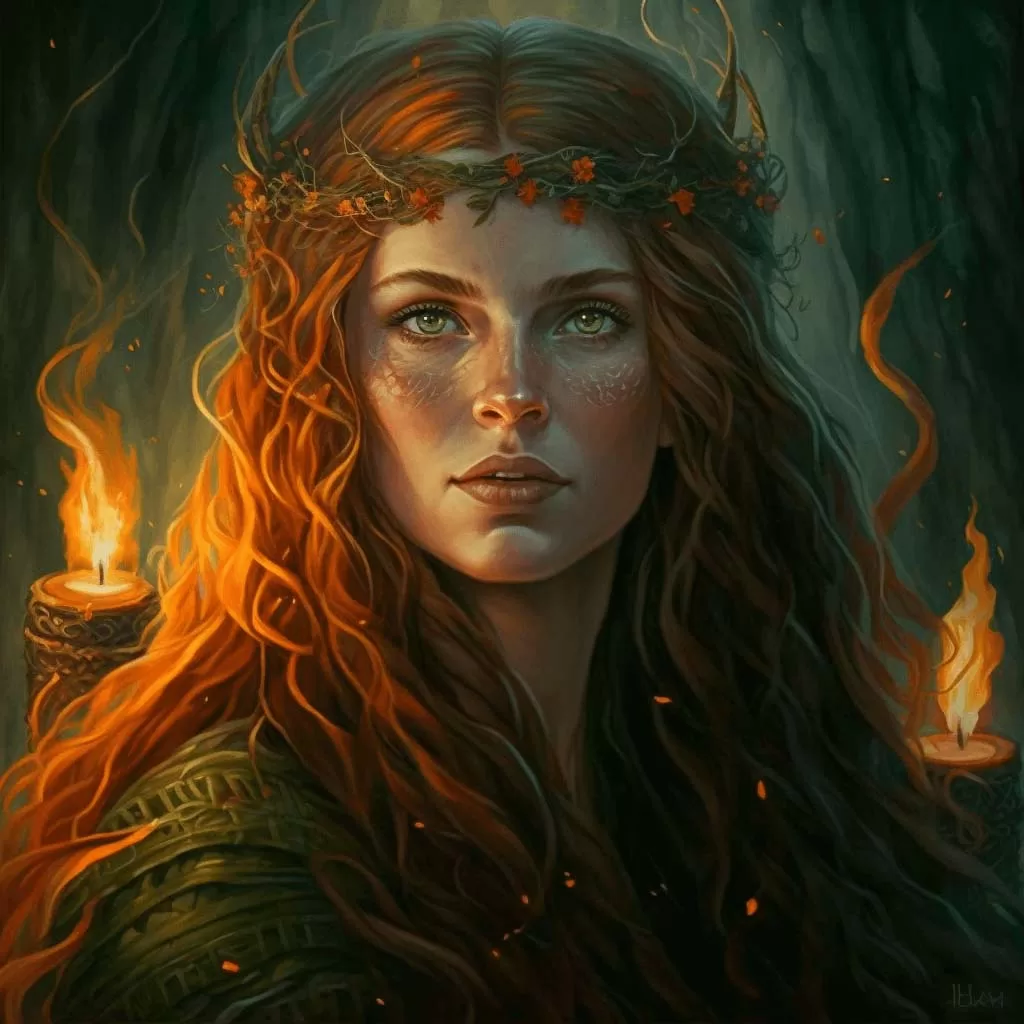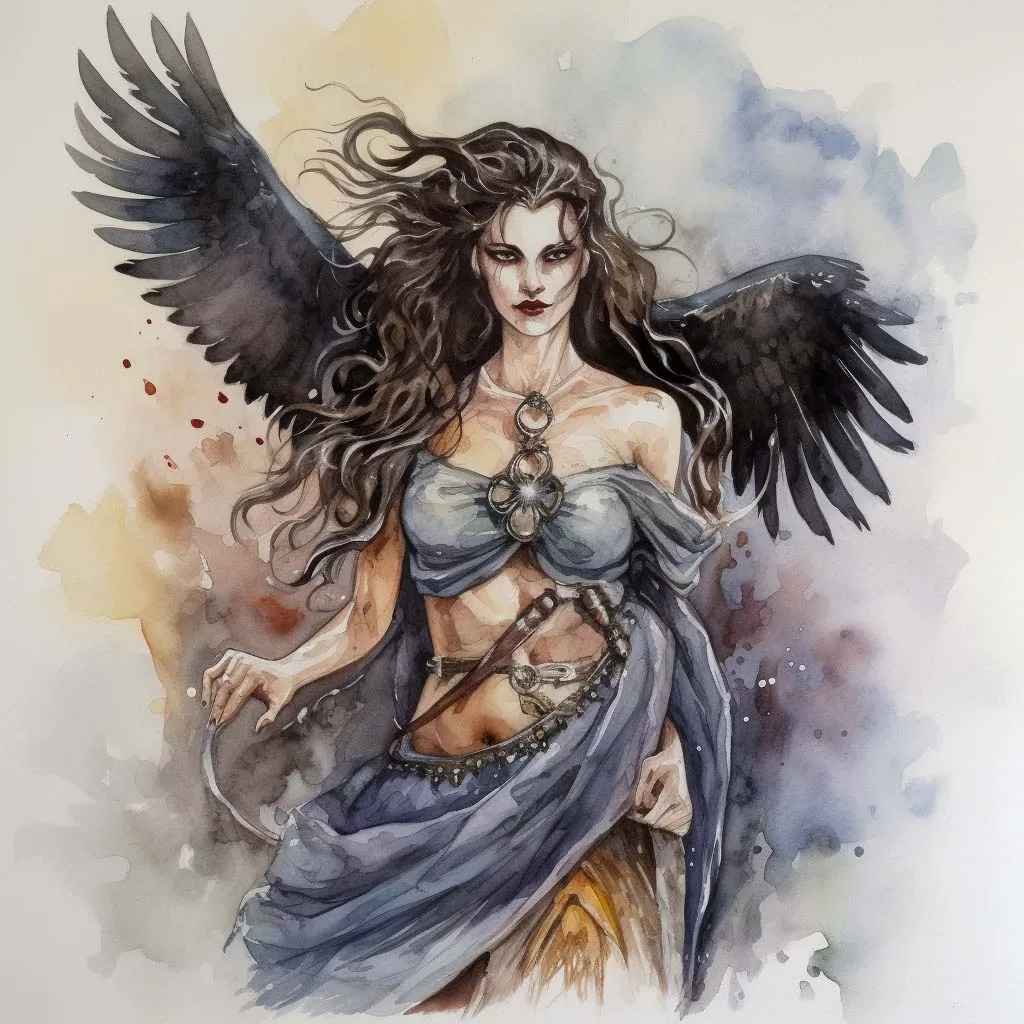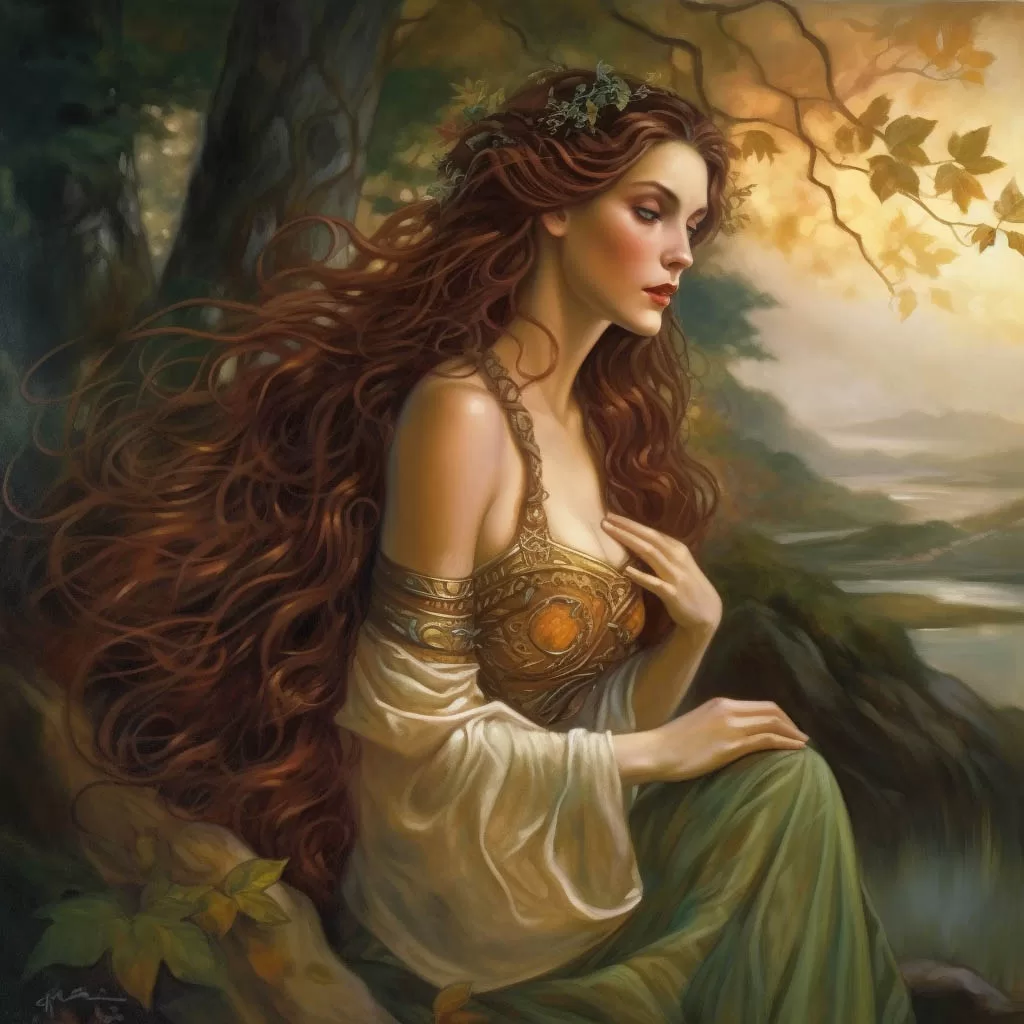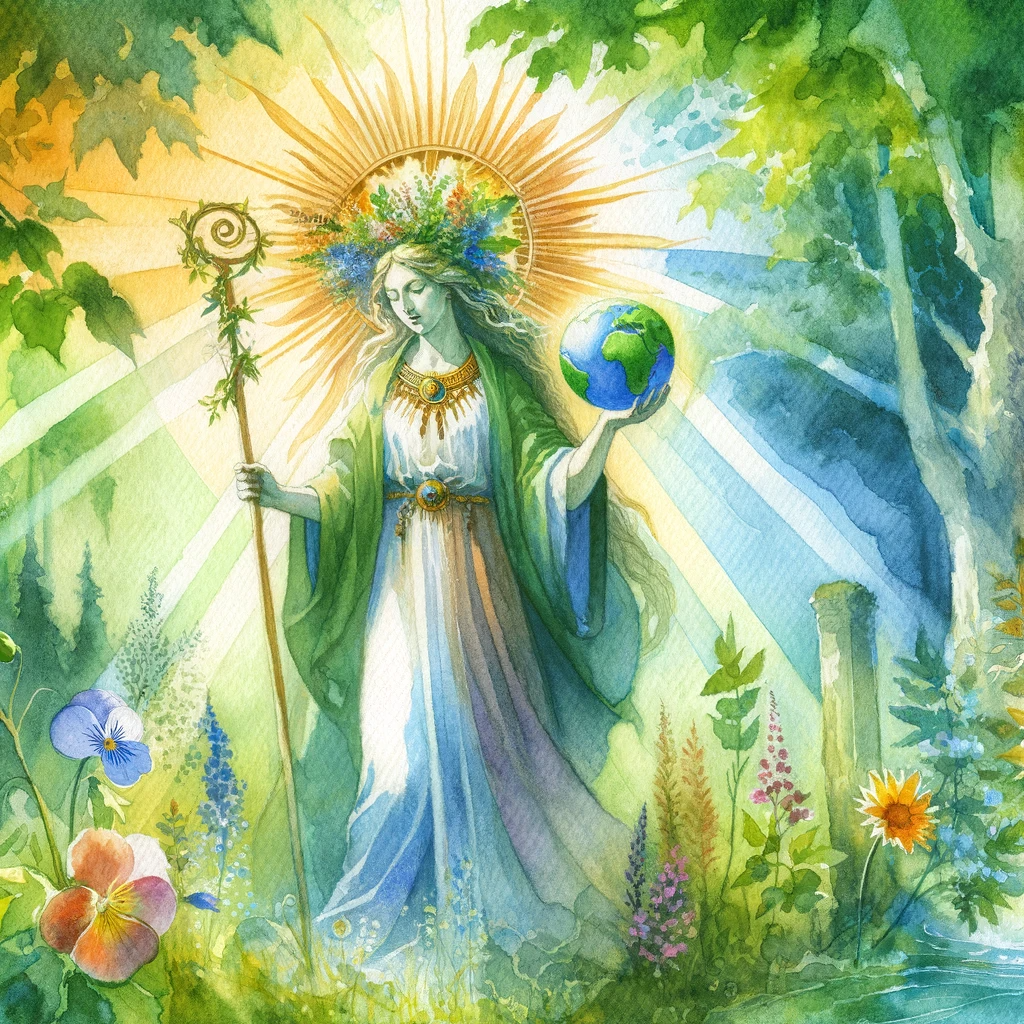Epona, revered in the ancient Celtic pantheon, stands as a unique figure embodying the essence of horses and horsemanship. Her veneration spans across various Celtic tribes, extending into the Roman Empire, where her worship was integrated and celebrated by soldiers and cavalrymen.
Origins | Symbolism | Worship | Legacy
This article explores Epona’s origins, symbols, worship practices, and her lasting legacy in modern culture.
Origins and Historical Significance
Epona’s roots are deeply entrenched in the rich soil of Celtic mythology, where she emerges as a protector and patroness of horses, donkeys, and mules. Her name, derived from the Proto-Celtic word epos, meaning ‘horse’, underscores her intrinsic connection to these noble creatures. Epona’s worship is believed to have originated in Gaul (modern-day France and surrounding regions) before spreading across the Celtic world and into Rome.
The historical significance of Epona is highlighted by her unique position in both Celtic and Roman cultures. Unlike other Celtic deities, Epona was adopted by the Roman Empire and was the only Celtic goddess to have a dedicated festival in the Roman calendar. This widespread acceptance underscores her appeal and the universal reverence for the horse across these diverse cultures.
Symbolism and Iconography
Epona is often depicted in a serene and nurturing stance, surrounded by horses or riding one, which symbolizes her dominion over horse breeding and the protection of these animals. Iconographic representations of Epona frequently include cornucopias and baskets of fruits, signifying her role as a fertility goddess who ensures abundance and prosperity.
The significance of Epona’s symbols extends beyond mere representations of fertility and protection. They embody the deep connection between humans and horses, highlighting the importance of these animals in warfare, transportation, and agriculture. Epona’s iconography serves as a testament to the respect and reverence ancient cultures held for the natural world and its creatures.
Worship and Rituals
Epona’s worship was marked by rituals and ceremonies that sought her blessings for horse fertility, the protection of stables, and the prosperity of their owners. Offerings of oats, barley, and hay were common, reflecting the tangible needs of the animals under her protection. Epona’s festivals were communal affairs, bringing together communities in celebration of their dependence on, and relationship with, horses.
In addition to agricultural communities, Epona held a special place among the Roman cavalry. Soldiers would dedicate altars and shrines to her within their camps, invoking her protection in battles and safe passage during travels. These practices illustrate the multifaceted aspects of her worship, catering to both the practical and spiritual needs of her devotees.
Legacy in Modern Culture
Epona’s influence extends into modern culture, where she is celebrated as a symbol of freedom, power, and the unbreakable bond between humans and horses. She is often invoked in contemporary pagan practices, embodying principles of fertility, protection, and the stewardship of nature.
The legacy of Epona is also preserved in literature, art, and folklore, where she continues to be a figure of inspiration and reverence. Her enduring presence highlights the lasting impact of ancient mythology on modern society, reminding us of the timeless values and connections that define the human experience.
Epona’s story, from her roots in ancient Celtic and Roman worship to her enduring presence in modern culture, reflects the universal reverence for horses and the natural world. Her legacy is a testament to the enduring bond between humanity and the animal kingdom, a relationship that continues to inspire and enrich our lives. Why not take the time to learn more about some of the other Celtic goddesses.
References
- Green, Miranda. “Animals in Celtic Life and Myth.“ Routledge, 1998. This book explores the importance of animals in Celtic culture, with sections dedicated to the role of horses and deities associated with them, including Epona.
- MacKillop, James. “A Dictionary of Celtic Mythology.“ Oxford University Press, 2004. This dictionary provides a comprehensive look at Celtic mythology, including entries on Epona, highlighting her attributes, symbolism, and worship.
- Henig, Martin. “Religion in Roman Britain.“ BT Batsford Ltd, 1984. Although focusing on Roman Britain, this book offers insights into how Celtic deities, including Epona, were integrated into Roman religious practices.
- Aldhouse-Green, Miranda. “The Gods of the Celts.“ Sutton Publishing, 1986. This work delves into Celtic deities and religious practices, with mention of Epona and her worship across the Celtic and Roman worlds.
- L’Arbre Celtique. “Epona.” [Online Resource] A comprehensive online database that provides information on Celtic deities, including Epona, with references to inscriptions, iconography, and worship practices.
- The British Museum Collection Online. The British Museum has an extensive collection of Celtic and Roman artifacts. Their online database includes items related to Epona, offering visual references and scholarly descriptions.
- Rives, James B. “Religion in the Roman Empire.“ Blackwell Publishing, 2006. This book includes discussions on the integration of Celtic deities into Roman religion, offering context for Epona’s veneration in the Roman Empire.



